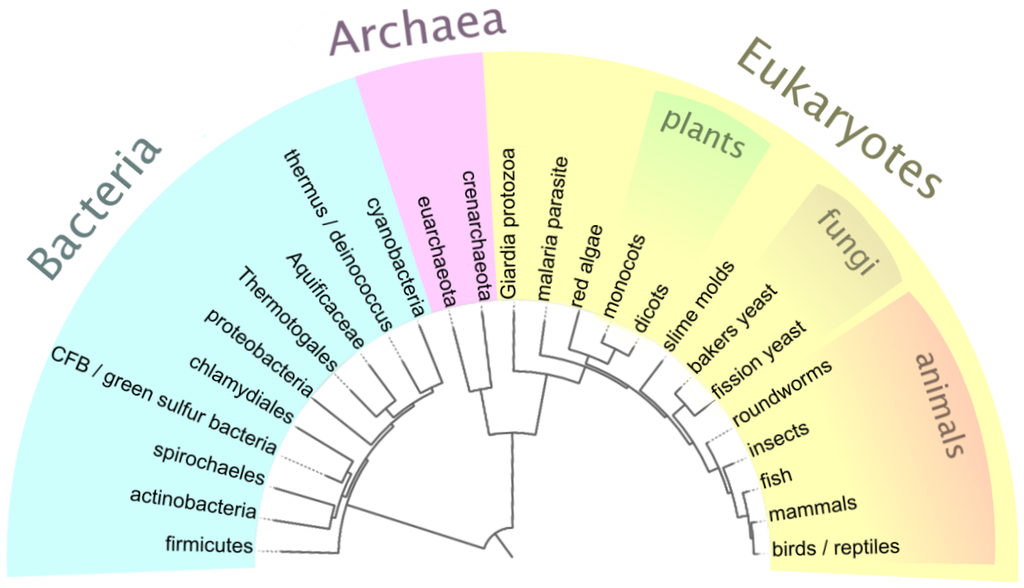Classification of Life
All living things on Earth share a relationship and the rules that govern life processes can be generalized across all organisms (living things), as well as non-living biological entities (viruses). To understand better the nature of living things, scientists use precise language in classifying these biological entities. The relatedness of organisms is often visualized as a phylogenetic tree. This tree is a hierarchical classification system that groups organisms together based on common features that is used to name them and is referred to as taxonomy. The most broad category is called a domain.

Three domains exist: Archaea, Bacteria and Eukarya. Archaea and Bacteria are also grouped together as Prokaryotes (pro– before; karya– kernel/nucleus). Eukarya (eu– true; karya– kernel/nucleus), or eukaryotes, is a group of of organisms that have nuclei. The second most inclusive or broad category is Kingdom. Humans are in the Kingdom of animals. The third most inclusive or broad category is Phylum. Humans are in the phylum called chordata. Each level of organization can be further subdivided and you may be more familiar with the subphylum called vertebrata. Within the this division, humans fall in the class of mammals. Amongst the mammals, humans are in the order of primates. Humans are categorized into a narrower group of organisms in the family of great apes or hominids (Hominidae). Within this family, humans fall into the genus of Homo. Biologists use a method of identifying specific organisms called binomial nomenclature. Binomial nomenclature uses the most specific groupings of taxonomy (genus and species) as a two part name. While humans are of the species sapiens, the species name of humans using binomial nomenclature is Homo sapiens. This hierarchy of taxonomy had been based on common visible features and have been revised through the extension of knowledge in the molecular realm using DNA analysis.



